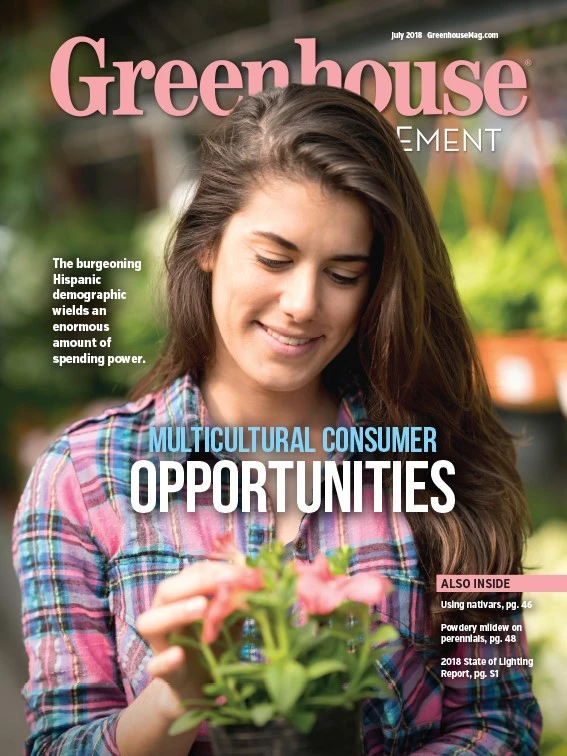When we conducted our first State of Lighting Report research back in 2016, we were interested in establishing a baseline for how and why ornamental and produce growers were — or weren’t — utilizing lighting in their operations. This year, we were able to compare the results of the 2016 report with our new results, which was an exciting prospect.
Overall, the demographics and numbers of respondents were similar in both reports, as were the approximate percentage of growers using some type of lighting, whether it was high-pressure sodium (HPS), light-emitting diodes (LED), or some other type — 37%. The three most popular reasons these growers use lighting in their operation were day length extension, supplemental lighting during low-light periods and propagation. Jessica Marlowe, propagation tech at North Carolina-based Hoffman Nursery, says that she’s noticed an increase in the use and research of lighting, especially for extending day length. “I worked in retail early in my career, and it used to be that you were limited to growing crops like poinsettias if you didn’t have the lights,” Marlowe says. “Shorter day length was a big limited factor.”
Professor and columnist Christopher J. Currey highlighted two significant changes that he’s seen in lighting over the years: “an increased awareness on the impact of light on horticultural crops” and “a refinement on the quality and value of lighting technologies.” That is to say, more growers understand the potential positive impact of adding light to their crops, and the available technology has advanced by leaps and bounds, whether it’s a higher efficiency, double-ended magnetic HPS or improved LEDs with variable spectrums and higher outputs. “I think the response to quantity of light is generally understood,” Currey says, but light quality and spectra are still being researched for potential benefits.
“[Over the past 20 years], I have seen a shift to far more efficient lighting systems, and I think we have moved away from the concept that more light is always better,” says Kyle Banas, nursery manager and head grower at Pizzo Native Plant Nursery in Illinois.
However, the biggest change that we noted was in the usage of LED lighting. In nearly every category, both ornamental and produce crops, from propagation through finishing, more growers are using LEDs. Duke Stockslager, owner of Stockslager’s Greenhouse & Garden Center near Dayton, Ohio, says that they have always used traditional, HPS or metal halide lighting in their operation, but that switching to LEDs has helped them to improve the quality and timing of their plants. It also was a key factor in their ability to become a rooting station for a well-known plant breeder, bringing in additional revenue.
For Lloyd Traven, the decision to incorporate LEDs into Peace Tree Farm’s Pennsylvania greenhouses has enabled them to grow and sell high-quality basil plants to a local grocery chain 52 weeks out of the year, and has improved their overall propagation quality. “We feel that [LED lighting] will revolutionize the way we grow here,” Traven says. “It certainly is revolutionizing the way we propagate.”
The evolution of lighting in horticulture has enabled growers to improve their operations in many ways, and the technological advances show no signs of stopping, especially with LEDs. As a researcher and supporter of the horticulture industry, Currey is looking forward to seeing the continued impact that lower fixture costs, updated technology and refined research have on growers’ operations and bottom lines, as well as to the quality of the plants, whether it’s more flavorful herbs, more compact plugs, or other benefits. “I’m most excited to see if LED lighting can add value to horticultural products to make our product more profitable and improve our industry,” he says.

Explore the July 2018 Issue
Check out more from this issue and find your next story to read.
Latest from Greenhouse Management
- Anthura acquires Bromelia assets from Corn. Bak in Netherlands
- Top 10 stories for National Poinsettia Day
- Langendoen Mechanical hosts open house to showcase new greenhouse build
- Conor Foy joins EHR's national sales team
- Pantone announces its 2026 Color of the Year
- Syngenta granted federal registration for Trefinti nematicide/fungicide in ornamental market
- A legacy of influence
- HILA 2025 video highlights: John Gaydos of Proven Winners





